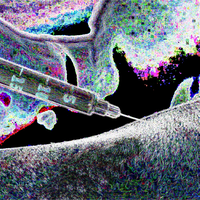| Tetraethyllead | |
|---|---|
| Molecular structure via molpic based on CDK |
| Physical properties [] | |
|---|---|
| Molecular mass | 323 g/mol [1] |
| Density | 1.653 at 68 °F (EPA, 1998) - Denser than water; will sink g/cm3 [1] |
| Appearance | Colorless, oily liquid [1] |
| Odor | Musty odor [1] |
| Melting point | -202 °F (EPA, 1998) [1] |
| Boiling point | 392 ° [1] |
| Decomposition | Failure to cover the residue with water after emptying a tank of the compound caused explosive decomposition after several days. [1] |
| Solubility | less than 1 mg/mL at 70 °F (NTP, 1992) [1] |
| Structural Identifiers [] | |
|---|---|
| Molecular formula | C8H20Pb [1] |
| IUPAC name | tetraethylplumbane [1] |
| SMILES | CC[Pb](CC)(CC)CC [1] |
| InChI | InChI=1S/4C2H5.Pb/c4*1-2;/h4*1H2,2H3; [1] |
| InChIKey | MRMOZBOQVYRSEM-UHFFFAOYSA-N [1] |
Tetraethyllead
Tetraethyllead (also known as Plumbane, tetraethyl-, Tetraethylplumbane, Tetraethyl lead, Tetra(methylethyl)lead, Czteroetylek olowiu, Lead, tetraethyl-, Tetraethylolovo, Lead tetraethide, NCI-C54988 or Piombo tetra-etile)
Chemistry
Stereochemistry []
Tetraethyllead is a achiral mixture
 Anodyne
Anodyne